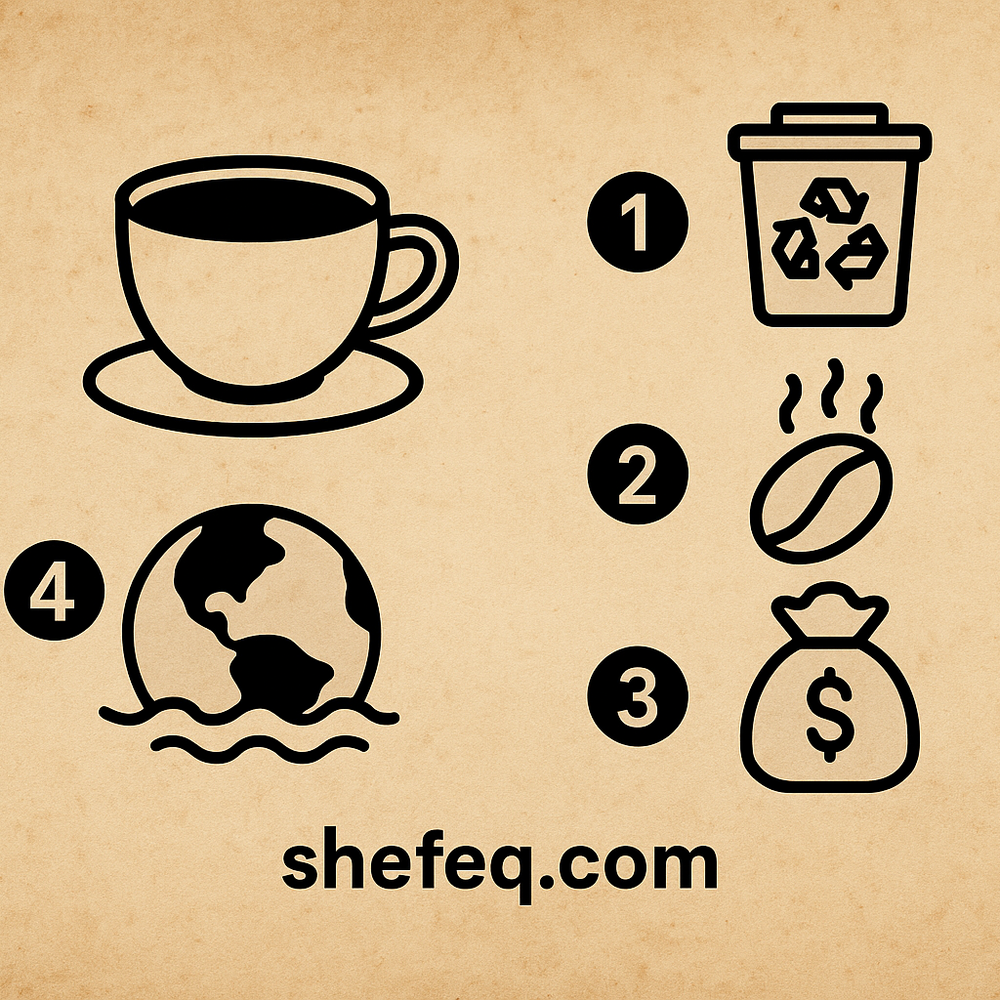Do you drink coffee? Or are you still among those who don’t? According to research conducted in the USA, about 83% of Americans drink coffee at least once a day. Your coffee might be a simple cup brewed with the drip method, or it might be a colorful “Unicorn Frappuccino” filled with syrups. In any case, there are some interesting facts about the world of coffee you should know.
1. K-Cups – An Ecological Nightmare
If you pay £50 for a bag of high-quality coffee, it’s natural to expect exceptional taste or a unique burst of energy. But if you buy the same coffee in K-cup capsule form, both your wallet and our planet take a hit.
The Keurig system — a device that brews coffee using small, single-use plastic capsules — has brought convenience to millions of people. But that convenience comes at a high cost: billions of plastic capsules are thrown away every year. Worse, most of these capsules cannot be recycled. Keurig has even altered the software in some models to prevent competing brands’ reusable capsules from working.
There’s also a technical issue: the system doesn’t heat the water enough, resulting in a weak coffee taste. But let’s admit it, saving 20 seconds is more important for some people.
2. The Giants Behind “Artisanal” Coffee Brands
You might think of high-end “artisanal” coffee brands like Intelligentsia, Stumptown, and Blue Bottle as independent businesses far from corporate influence. But the reality is different.
In the 2000s, as the “third wave” anti-Starbucks coffee movement began in the USA, big corporations took notice. Soon after, JAB Holdings Inc acquired Intelligentsia, Stumptown, Caribou, Pret A Manger, and Peet’s. In 2017, Blue Bottle was purchased by Nestlé — a company known for scandals related to product health and unethical production practices.
The takeaway? While you may think you’re drinking a more ethical and high-quality coffee, you may actually be supporting a multinational corporation.
3. The Future of Quality Coffee Is at Risk
Coffee comes mainly in two types: Arabica and Robusta. Arabica is known for its mild and aromatic taste, while Robusta is higher in caffeine and more bitter. However, Arabica beans are very sensitive: they require specific altitude, temperature, shade, and rainfall conditions, and they are also vulnerable to diseases.
Climate change is disrupting these conditions. Studies show that by 2050, 70% of suitable land for Arabica cultivation will disappear. This will lead to higher prices and put millions of farmers out of work. Robusta is more resilient but far less popular in terms of taste.
4. Caffeine – A New “Resident” in the Pacific Ocean
Caffeine occurs naturally in coffee, cocoa, kola nuts, and tea leaves. But it has also been detected in oceans. Research indicates that after drinking coffee, people excrete caffeine through urine into sewage systems, from where it enters rivers and seas.
Studies in Boston Harbor found high levels of caffeine even in treated wastewater. How caffeine affects marine flora and fauna remains unclear. Public opinion on coffee’s effect on human health has already shifted (“coffee is harmful” → “coffee prolongs life”), but it may take years of research to determine its impact on marine ecosystems.
Conclusion: Coffee impacts the world not only through its taste and aroma, but at every stage — from production to consumption. Enjoying it is one thing, but it’s also important to be aware of the ecological, economic, and social realities behind that cup.
Question for you: What measures do you think should be taken to preserve the taste and ecological value of coffee for future generations? Share your thoughts with us.

